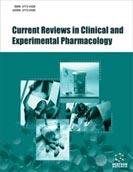Abstract
Background: Joint hypermobility syndrome (JHS) is one of the most common heritable genetic disorders of connective tissue, characterised by excessive joint range of motion and the presence of musculoskeletal symptoms. Prevalence estimates of JHS range from 5% to 18% and vary with gender, age and ethnicity. JHS is associated with generalised joint laxity, joint instability, motion incoordination, decreased joint position sense, and musculoskeletal pain. The research evidence-base for treating lower limb symptoms in JHS is increasing. This paper outlines a protocol for a systematic review of the evidence for physical and mechanical treatments for lower limb problems in children with JHS.
Methods/Design: MEDLINE, EMBASE, Cochrane Central Register of Controlled Trials, PUBMED and CINAHL will be searched for randomised controlled trials and quasirandomised controlled trials investigating physical and mechanical interventions for lower limb problems in children with JHS. Two authors will independently screen studies for eligibility for inclusion and will assess risk of bias of included studies. One author will extract and analyse statistical data, which will be checked by the second author.
Discussion: The systematic review aims to establish the best-practice use of physical and mechanical interventions for lower limb complications of JHS in children and to highlight the areas of greatest need for future research.
Keywords: Joint hypermobility syndrome, lower limb, foot, children, foot orthoses, protocol.
Graphical Abstract
 8
8 2
2



